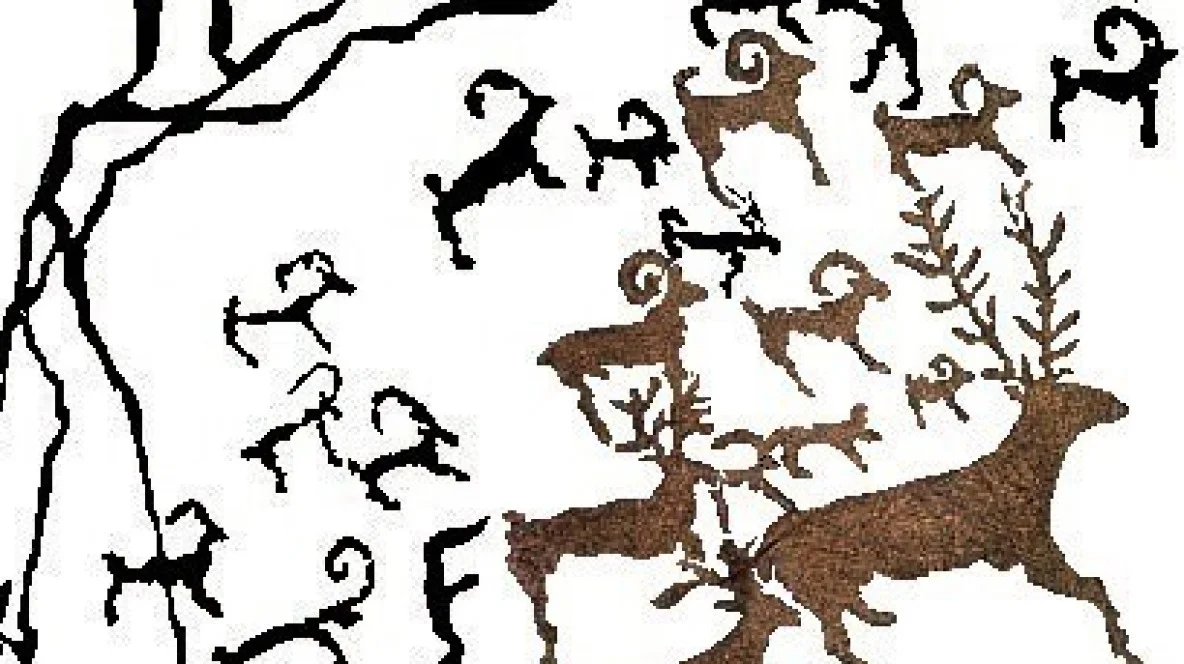One of the most common motifs found in various clusters of petroglyphs in the area from the southern Urals to Siberia and Mongolia is the depiction of a hoofed, female animal with her young. What significance then did our ancestors attribute to these images? Let’s find out.
Most scholars agree that in ancient times, many peoples across the world associated the image of the mother-progenitor with hoofed animals, often depicted through representations of a female with her offspring. Indeed, slabs with scenes such as this usually occupy a central place in petroglyph clusters. The most commonly depicted animals are goats with kids, female argali (wild sheep) with lambs, female deer with fawns, and, less frequently, horses with foals, camels with calves, and, very rarely, cows with calves.
A true masterpiece of this ancient image is the petroglyph from Group No. 7 in the Arqarly Mountains in Jetisu. This composition centered around a deer with large, branching antlers, a doe, and a newborn fawn. The fawn is suckling milk from its mother. Next to the deer, the image also depicts argali and goats, some of which are shown with their young. Bronze Age hunters and a medieval archer on horseback have been drawn shooting arrows at them with bows.
The composition developed over the course of several millennia, with the first images appearing during the Bronze Age (second millennium BCE to eighth century BCE), while the most recent ones date to the Middle Ages.
The central part of the composition—the family of deer—was repeatedly updated and reworked. And yet, the meaning of the image was clearly understood by and resonated with the people who inhabited the Arqarly Mountains from the Bronze Age to the Middle Ages. This suggests that the cult of the mother goddess, represented as a female animal with her young, existed throughout this period. This may point to a continuity in the mythology and traditions of the people who lived in this region.
It is actually somewhat of a miracle that the scene from Arqarly has survived. A flagstone mining company's production facility was situated only 70–100 meters from this petroglyph cluster, and several rock formations in close proximity to this petroglyph were demolished. In 2021, through the joint efforts of scientific volunteers from the Petroglyph Hunters team, scientists from the A. Margulan Institute of Archeology, deputies of the Majilis,i
P.S. The drawing in this publication is from the monograph Petroglyphs of the Arkharla Mountains: Materials and Research on the Archaeology of Kazakhstan, Volume XV, by A.A. Goryachev, E.S. Kazizov, T.A. Yegorova, and O.N. Gumirova (Almaty 2023).




